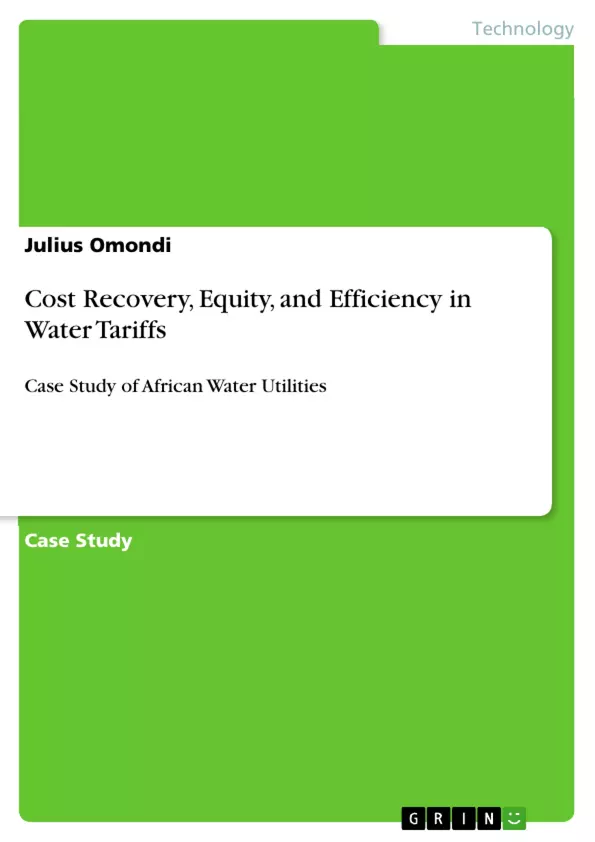The objective was to address water and sanitation tariffs in Africa, along with their relationship to cost recovery, cross-subsidies, and financial sustainability. The study was conducted on 45 water utilities from 23 countries in Africa in 2006-2007.
Middle income countries (MIC):Cape Verde, Lesotho, Namibia, and South Africa others are low income countries(LIC). Water utilities covered are at national level for countries with single utility and at regional or provincial level for countries with many service providers in decentralized system.
Inhaltsverzeichnis (Table of Contents)
- List of Acronyms
- Introduction
- 1 The conflicting goals of tariff design
- 2 An overview of WSS tariffs in Africa
- Metered water tariff structure
- Types of block structures
- 3 Do tariffs recover costs?
- 4 Do tariffs provide efficient price signals?
- 5 Are tariffs equitable?
- 6 A scorecard of tariff performance
- 7 Conclusions
- 8 References
Zielsetzung und Themenschwerpunkte (Objectives and Key Themes)
This study focuses on the relationship between water and sanitation tariffs in Africa and their impact on cost recovery, cross-subsidies, and financial sustainability. The study was conducted on 45 water utilities from 23 African countries between 2006 and 2007, including both middle and low-income countries. The research explores the performance of water tariff structures by investigating their ability to recover costs, promote efficient price signals, and ensure equitable distribution.
- Cost Recovery in Water Tariffs
- Efficiency of Price Signals in Water Tariffs
- Equity and Fairness in Water Tariff Structures
- Cross-Subsidies and Financial Sustainability in Water Services
- Impact of Water Metering on Tariff Performance
Zusammenfassung der Kapitel (Chapter Summaries)
- Introduction: This chapter introduces the study's objectives, scope, and methodology. It provides background information about the water and sanitation sector in Africa, highlighting the importance of tariffs in achieving cost recovery and financial sustainability.
- 1 The conflicting goals of tariff design: This chapter discusses the challenges of designing water tariffs that balance the need to provide affordable services with the requirement to recover costs. It explores different tariff structures and their implications for cost recovery, efficiency, and equity.
- 2 An overview of WSS tariffs in Africa: This chapter provides a comprehensive overview of water and sanitation tariffs in Africa, highlighting the prevalence of metered and unmetered tariffs, different block structures, and other tariff components.
Schlüsselwörter (Keywords)
The study's key focus areas include water tariffs, cost recovery, equity, efficiency, cross-subsidies, financial sustainability, water metering, block tariffs, and water utilities in Africa. It explores the various dimensions of water tariff design and their implications for achieving sustainable water services in the region.
- Arbeit zitieren
- Julius Omondi (Autor:in), 2017, Cost Recovery, Equity, and Efficiency in Water Tariffs, München, GRIN Verlag, https://www.grin.com/document/478154



